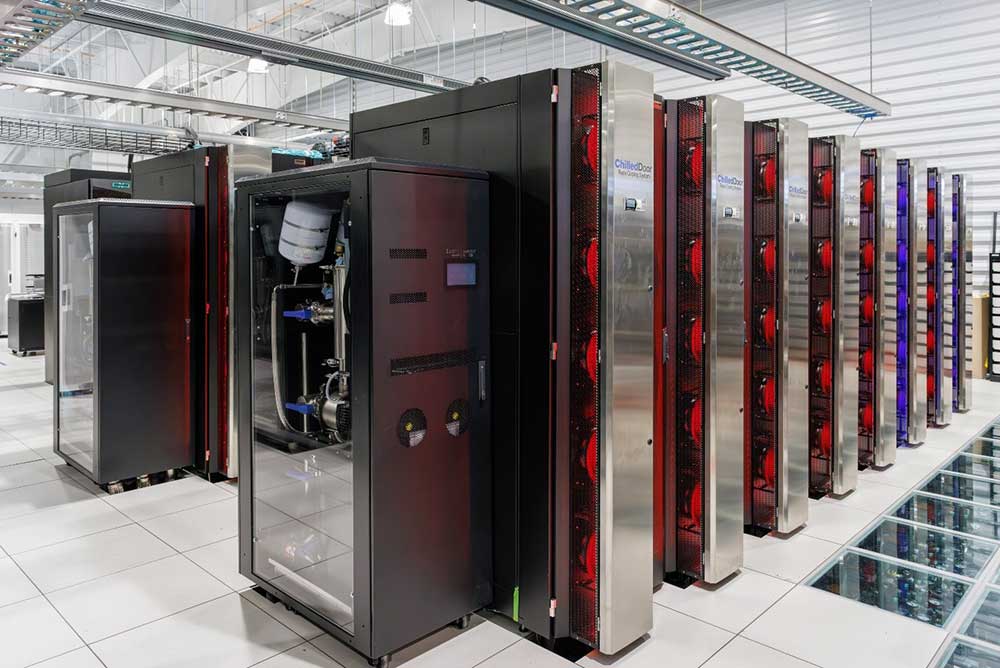
New classified cloud service
NNSA selected Sandia as the lead laboratory to design, implement and operate the NNSA Secret Cloud Network, a new classified cloud service. The initiative is a revolutionary opportunity for DOE and NNSA sites as it offers a single shared cloud environment that provides enterprise-wide services for email and collaboration to all users connected to the classified network. Sandia is partnering across the nuclear security enterprise and working through the discovery and design phase to deploy the network across all sites. • 9000
Sandia deploys creative CUI solutions
Controlled Unclassified Information rules are more complex than Official Use Only rules, and OUO categories don’t map neatly to CUI. To help with the transition, Information Technology deployed several creative solutions, including a CUI Liaisons program, a dedicated resource for answering CUI questions and the CUI Marking Assistant, a point-and-click tool that develops CUI markings. The OUO-to-CUI crosswalk and CUI website provide additional job aids, and the team maintains an email entity to answer user questions as they arise. • 9000
IT innovates to unleash excellence
To help Sandia capture ideas and innovate through the Unleash Excellence Initiative, Information Technology released ServiceNow’s crowdsourcing tool in the Idea Management module before all other ServiceNow solutions. Drawing on crowdsourcing for ways to reduce red tape, the Unleash Excellence Initiative engages and encourages workers to submit ideas, which are voted up or down by others, and vetted by center and division representatives for feasibility of implementation. Since its release in May, Sandia’s innovative workforce has generated over 500 ideas. Iterative improvements to the tool have enabled the team to more efficiently analyze and communicate new ideas. • 9000
Digital engineering enterprise collaboration
In collaboration with partners across Sandia and other nuclear security enterprise sites, the Product Realization Integrated Digital Enterprise program launched systems for enabling digital engineering at the Labs and other sites. The program produced an Enterprise Requirements Management System to enable such efficient cross-site requirements as collaboration and traceability to support weapons programs. The team is working on an enterprise-wide Digital Thread aimed at accelerating weapons product realization, increasing agility and responding to rapidly emerging threats. • 9000

HPC partnering boosts performance
The High-Performance Computing Systems team partnered across Sandia to combine three HPC Transformational Investment Wedge requests. The Flight cluster will enable Sandia’s climate-computing program to support enhanced climate modeling and analysis and will provide mission organizations the ability to acquire dedicated computational resources. The new units also will provide institutional graphics processing unit cycles to HPC and HPC artificial intelligence and machine learning workloads. • 9000
Technical security system upgrades
Security teams in New Mexico and California completed a comprehensive three-year project to upgrade security access control and alarm systems. The new intrusion detection system provides state-of-the-art alarm monitoring and more efficient, robust tools for data collection and system management. Additionally, more than 1,500 badge readers across the Labs were replaced with newer technology that provides more reliable performance and proactive life-cycle management. • 9000
Sandia meets security performance goal
Sandia met a significant security performance goal to track the rate of Category A Incidents of Security Concern against labor hours. Through strong partnerships between the Security organization and Cybersecurity, Information Technology and mission organizations, Sandia met the goal set by Labs leadership in fiscal year 2021 and then surpassed it, achieving a significant 50% reduction in the targeted rate metric. Efforts that contributed to the success included improvements to the processes and tools associated with causal analyses and corrective actions, expanded venues for sharing classified lessons learned and enhanced training. • 9000